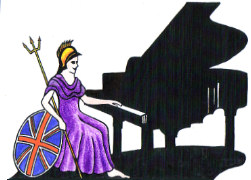Teachers, Accompanists and Piano Entertainers in the UK

UK Piano Page

Islington, London N5
England
AMH Pianos Offers piano moving and piano disposal
Richmond upon Thames, London TW9
England
London Borough of Richmond Piano Moving and piano
Bexley, London DA1
England
Piano Moving services in the London borough of
Camden, London
England
Experienced piano teacher and accompanist
Great Harwood, Lancashire
England
I teach piano & violin from my own home in Great
for only £6.00 + PP

Music Festival for performers and guests Our 10th
18-06-2022 01:30PM
The Morecambe Bay Piano Group was set up to extend
11-12-2021 02:00PM
The Morecambe Bay Piano Group was set up to extend
08-01-2022 02:00PM
The Morecambe Bay Piano Group was set up to extend
12-02-2022 02:00PM
The Morecambe Bay Piano Group was set up to extend
11-05-2024 02:00PM
The Morecambe Bay Piano Group was set up to extend
08-06-2024 02:00PM
The Morecambe Bay Piano Group was set up to extend
13-07-2024 02:00PM
The Morecambe Bay Piano Group was set up to extend
10-08-2024 02:00PM